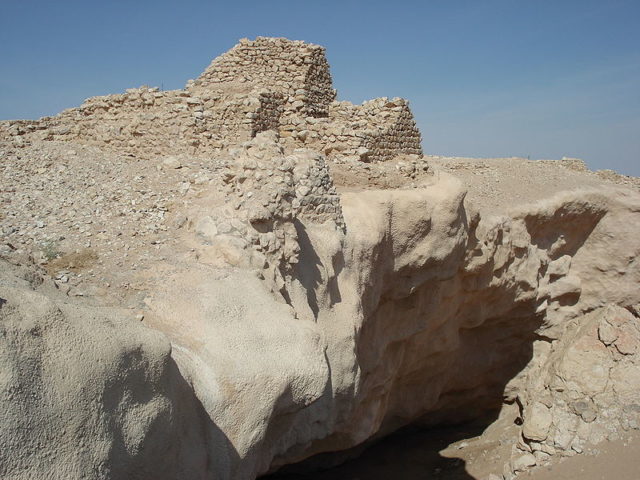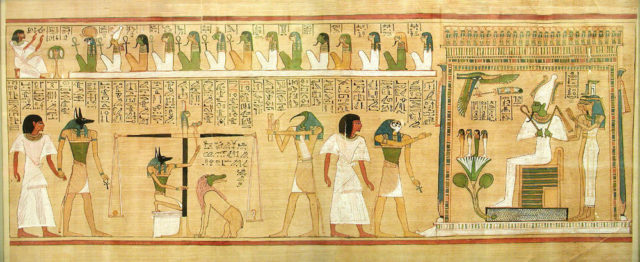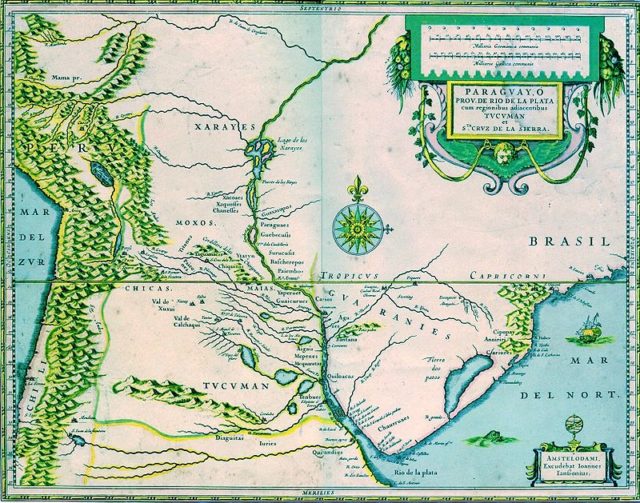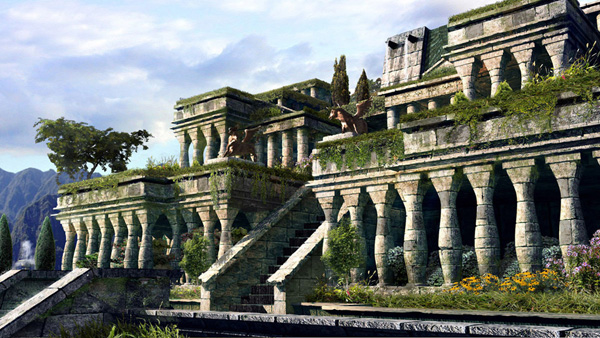There are many ancient myths and legends about cities and towns that vanished, were abandoned, or lost forever under mysterious circumstances.
The most famous of these civilizations is the mythical Atlantis, which is said to have sunk into the ocean in a single day and night and remained lost forever.
But there are also many lesser-known stories of lost civilizations over the course of human history from around the world.
1.Iram of the Pillars

Iram of the Pillars is a lost city mentioned in the Quran that rivals Atlantis in efforts made by humans to be the first to uncover a legend.
Little known outside the Islamic world, Iram, called “Atlantis of the Sands” by author T.E. Lawrence or City of the Tent Poles–referring to pillars that may have been in or around the city–is continually being sought by explorers. Scholars are divided on whether these pillars could be geographical features, an actual city, or even the tents of the tribe of indigenous people the Ad. Some have suggested Iram could be Alexandria, Damascus or the ancient city of Ubar.
According to the Quran, the Ad rejected the teachings of Allah and were living in a sinful manner. Allah sent the prophet Hud to bring the Ad back to His word but the Ad rejected him, refusing to listen. Allah punished the Ad by sending a sandstorm to plague them for seven days and seven nights, burying Iram and its people in the sand.
Archeologist and filmmaker Nicholas Clapp believes he has uncovered the city of Uber in Iram of the Pillars. Using NASA satellites, radar, and photographs taken by the Space Shuttle, Clapp’s team was able to identify old trading routes leading to an oasis in Shir, Dhofar Province. The excavation was begun in the 1990s leading to the discovery of a structure of towers connected by a series of high walls.
Regrettably, the excavation work may have weakened the area around the base of the structure as sections of the structure were destroyed when a sinkhole opened.
2.Thinis

Ancient Egyptian historian Manetho wrote that in the years 3100 to 3000 BC, Upper Egypt was approaching political unification. Ancient Egyptians had begun recording history by hieroglyphs for the first time and three small independently governed cities on the banks of the Nile, Thinis, Nekhen, and Naqada were vying for dominance of the area.
The armies of Thinis absorbed Naqada and went on to conquer lands in the lower Nile Valley. Manetho believed that Nekhen may have voluntarily merged with Thinis and for the first time Egypt was united under one ruling dynasty. According to Manetho, the final ruler of that dynasty, Narmer, sometimes known as Menes, was the first Pharaoh ruling under the divine right.
When the seat of government was moved to Memphis, Thinis gradually faded in importance.
Archeologists have found evidence of Narmer in hieroglyphics and ancient tablets such as The Narmer Palette, discovered in 1897 by the British archaeologists and authors, James Edward Quibell and Frederick Wastie Green in the Temple of Horus in Nekhen. The chevron shaped tablet glorifies the military success of Narmer in Lower Egypt and the approval of the Egyptian gods.
Unfortunately, no evidence of the city of Thinis has ever been found. It is hopeful that the remains of this important city in Ancient Egypt will someday be revealed along with its treasures.
3.The Hanging Gardens of Babylon
Listed as one of the Seven Wonders of the Ancient World, The Hanging Gardens of Babylon have never been demonstrated to have existed.
According to Babylonian priest Berossus, the ancient city of Babylon, which is believed to have existed near Babil Province in Iraq, was ruled by King Nebuchadnezzar II between 605 and 562 B.C. and it was he who commissioned the tiered gardens about 600 B.C. as a gift to his wife, Amytis.

While the plants did not actually hang, the illusion of hanging was completed by the overspill of the lush plants to the tier below.
No one can be certain if the Gardens ever existed as there are no references in written histories of the time other than Berossus and Diodorus Siculus, a Greek historian. Although the builders of the time were certainly capable of creating a large step terraced garden, nothing has been discovered by archaeological excavations along the Euphrates River.
Evidence may have been destroyed in an earthquake which struck the area in the second century or perhaps it has been hidden by the shifting sands near the Euphrates River, but no one knows with any certainty.
4.Paititi
High in the Andes Mountains in Peru, archaeologists and explorers have been on a quest to discover the legendary city of the Incas, Patiti.
Italian archaeologist Mario Polia has discovered the writings of missionary Andres Lopez in 1600. Lopez reported that a large city filled with gold and valuable jewels had been described by the locals but having never visited the site, Lopez’s writings are considered suspect.
Dozens of explorers have attempted to find the lost city of gold since the 1600s and documents provided by these explorers have placed Paititi in the junction of the Beni and the Madre de Dios rivers. Some believe that Paititi was actually in Bolivia causing Dr. Ari Siiriäinen and Dr. Martti Pärssinen from Helsinki to explore Las Piedras near the town of Riberalta in eastern Bolivia in 2001, but they failed to discover anything of consequence. Anthropologist Vera Tyuleneva has also made several expeditions in Bolivia without any conclusive evidence.
In 2007 locals near Kimbiri, Peru reported large stone structures resembling a fortress had been found but the Peruvian government’s National Institute of Culture has disputed these discoveries, claiming they were merely natural deposits of sandstone.
The Amazon jungle surrounding the site believed to be that of Paititi is dense and extremely dangerous. Without a local to serve as a guide it is unlikely that explorers would be able to successfully make it through the jungle. Several explorers, including journalist Robert Nichols who entered the jungle in 1970 to look for Paititi, and Lars Hafskjold, whose expedition of 1997 searched near Bolivia, never returned.

No one knows the fate of Hafskjold but reports from Japanese law student, Yoshiharu Sekino, who went looking for Nichols, learned from natives that Nichols and his team were killed by indigenous Indian tribes after one of Nichols’ young associates had made a pass at a local Machiguenga woman.
Read another story from us: Ciudad Perdida: The “Lost City” of Colombia
Expeditions are still being mounted to find the lost Inca city and with the advance of new technology, it is entirely possible that someone will one day discover the ancient city of Patiti if it truly does exist.
